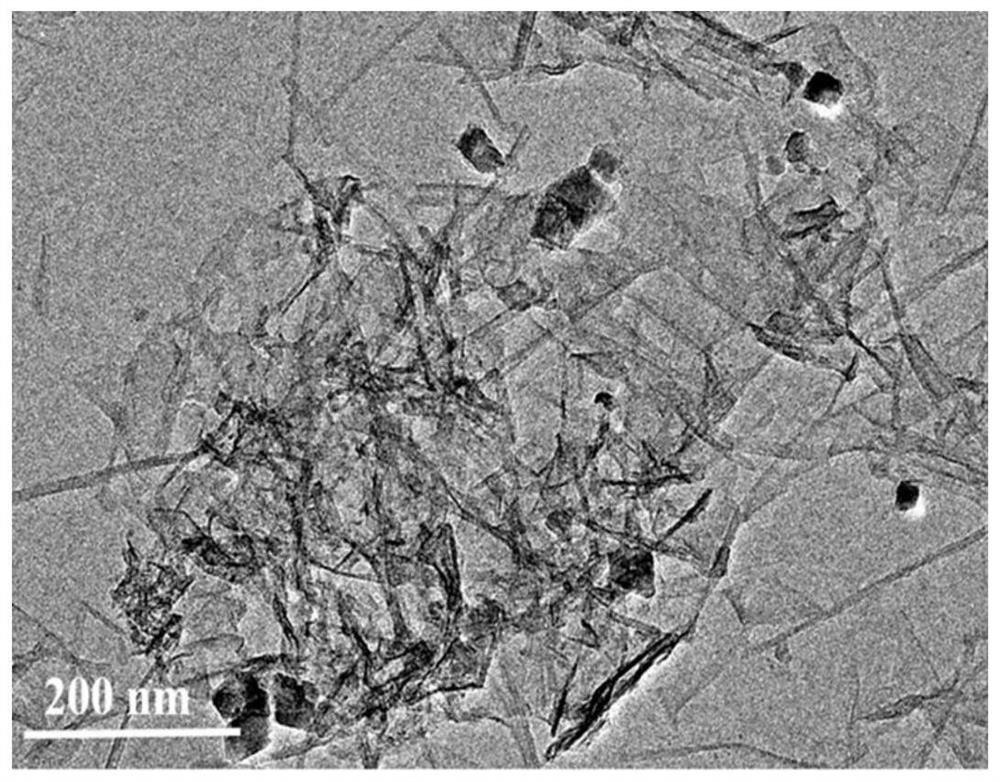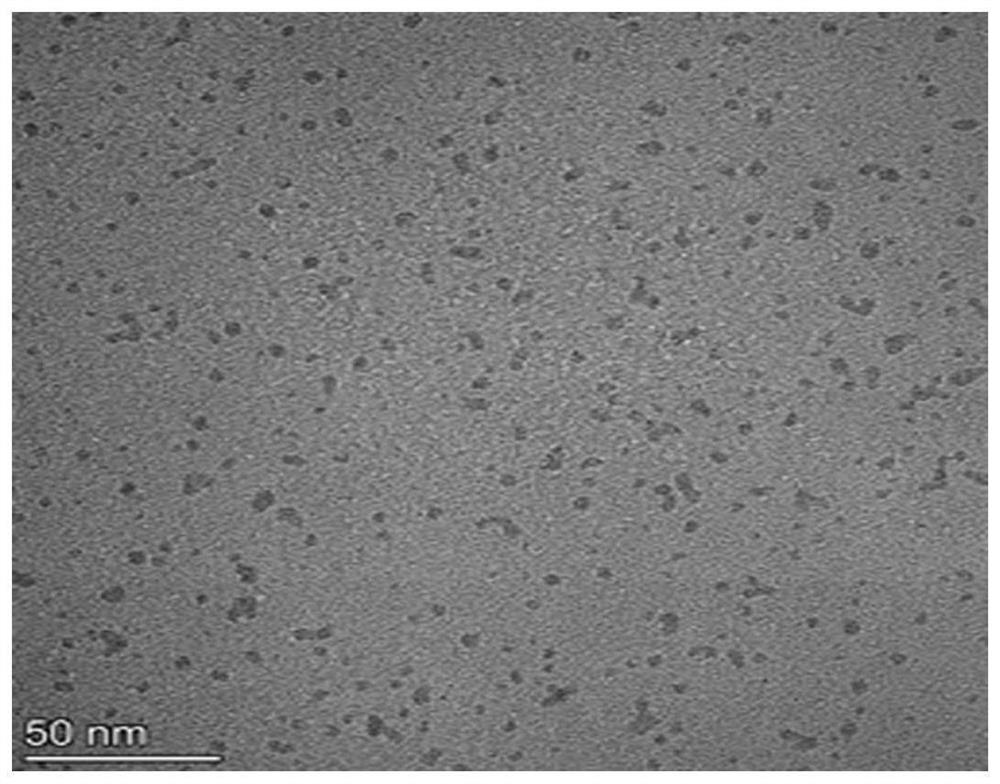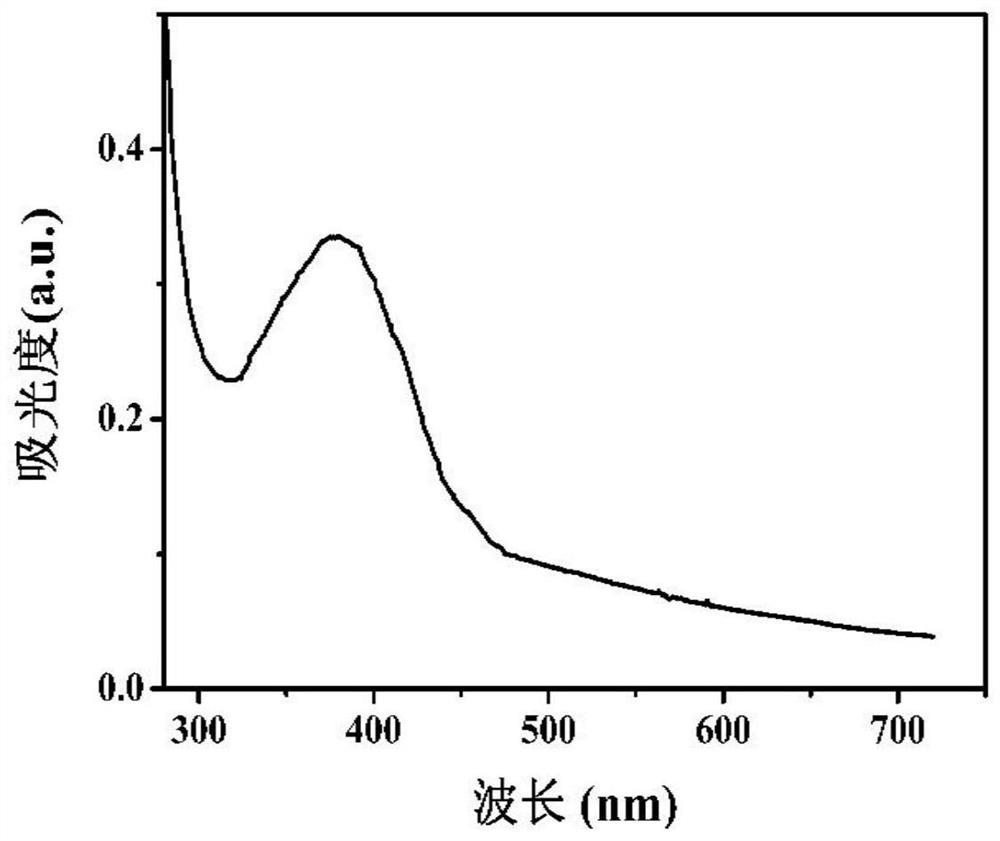Ratio-dependent fluorescent probe for detecting residual quantity of 2, 4-D and determination method
A fluorescent probe and measurement method technology, applied in the field of analytical chemistry, can solve the problems of high equipment cost, long analysis time and high sensitivity, and achieve the effects of high biocompatibility, accurate test results and good reproducibility
- Summary
- Abstract
- Description
- Claims
- Application Information
AI Technical Summary
Problems solved by technology
Method used
Image
Examples
preparation example Construction
[0048] The preparation steps of the blue fluorescent carbon dot CDs include: dissolving citric acid and 0.52 g polyvinylamide in ultrapure water to obtain a mixed solution; then transferring the mixed solution to a polytetrafluoroethylene autoclave, After heating the mixed solvent for a certain period of time, it is cooled to room temperature, and the cooled solution is centrifuged to obtain a carbon dot solution; the carbon dot solution is filtered and purified to obtain the blue fluorescent carbon dot CDs. The citric acid and polyvinylamide are respectively 0.5-2 g and 0.4-0.6 g, and the ultrapure water is 20 mL; the heating temperature is 200-220° C., and the heating time is 3-4 hours. The purification is carried out in a dialysis bag (MW 1KDa) for 12-15 hours, and small molecule impurities are removed by purification.
[0049] The technical scheme of the present invention designs a dual emission ratio fluorescent probe with good photostability, biocompatibility, self-elimi...
Embodiment 1
[0051] This embodiment provides a dual emission ratio fluorescent probe, and the required materials include: MnO 2 OPDox with yellow fluorescence and blue CDs produced by nanosheet oxidation of OPD. The MnO 2 The specific method of nanosheets: 10mL MnCl 2 (0.3M) with 20mL H 2 O 2 (3%) and tetramethylammonium hydroxide (TMAH) (0.6M) were rapidly mixed; the mixture was stirred at room temperature for 12h, then the mixture was centrifuged at 2000rpm for 20min, washed three times with ultrapure water and methanol; The manganese dioxide flakes were dried at 60°C for subsequent experiments. The dried large pieces of manganese dioxide (1 mg / mL) were ultrasonically dispersed for 12 h, centrifuged at 2000 rpm for 30 min, and the supernatant was taken and stored at 4°C for later use. The specific procedure for the blue CDs: 1.0 g of citric acid and 0.52 g of polyacrylamide were first dissolved in 20 mL of ultrapure water, and then the mixed solution was transferred to a polytetrafl...
Embodiment 2
[0053] This embodiment provides a method for detecting 2,4-D using a dual emission ratio fluorescent probe, specifically:
[0054] (1) MnO prepared in Example 12 Take 200 μL of nanosheets (0.2 mg / mL), add 150 μL of LPD (10 mM) and 40 μL of carbon quantum dots, and react in pH 5 PBS buffer for 5 min. Obtain the probe solution to be detected.
[0055] (2) 100μL AAP (3mM) and 100μL ALP (20mU / mL) were added to PBS buffer at pH 8, and different concentrations of 2,4-D were added to the reaction system and incubated at 37°C for 30min. The detection probe solution is added to the mixed solution, mixed evenly, the volume is adjusted, and finally transferred to a cuvette for detection. The final concentrations of 2,4-D in the control reaction system were: 0 μg / mL, 0.05 μg / mL, 0.1 μg / mL, 0.25 μg / mL, 0.5 μg / mL, 1 μg / mL, 5 μg / mL, 10 μg / mL, 15 μg / mL, 20 μg / mL, 30 μg / mL, 40 μg / mL, 50 μg / mL.
[0056] (3) Based on the ratio of the fluorescence intensities of the two probe materials in the...
PUM
 Login to View More
Login to View More Abstract
Description
Claims
Application Information
 Login to View More
Login to View More - R&D
- Intellectual Property
- Life Sciences
- Materials
- Tech Scout
- Unparalleled Data Quality
- Higher Quality Content
- 60% Fewer Hallucinations
Browse by: Latest US Patents, China's latest patents, Technical Efficacy Thesaurus, Application Domain, Technology Topic, Popular Technical Reports.
© 2025 PatSnap. All rights reserved.Legal|Privacy policy|Modern Slavery Act Transparency Statement|Sitemap|About US| Contact US: help@patsnap.com



